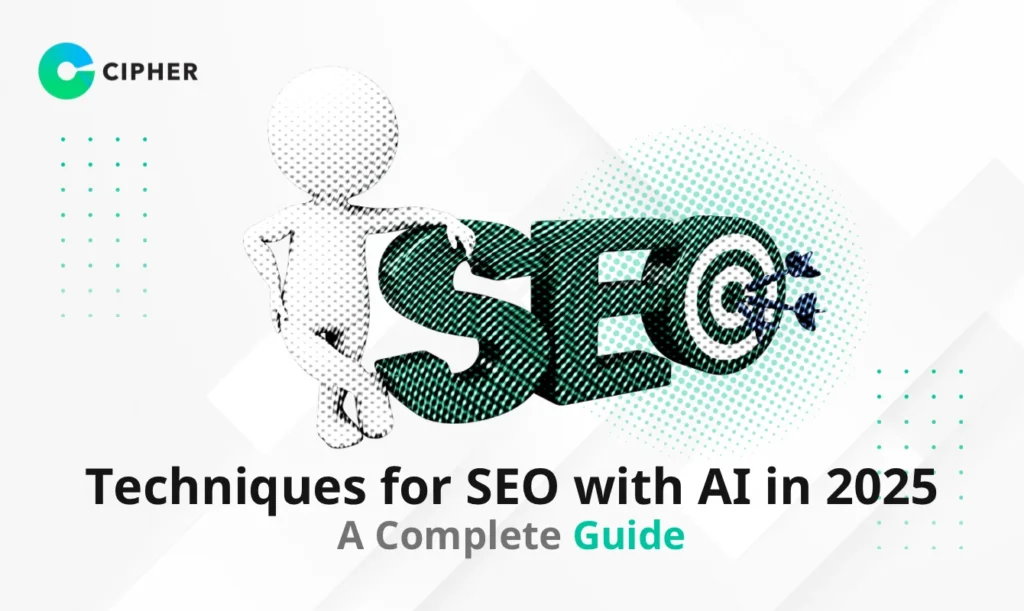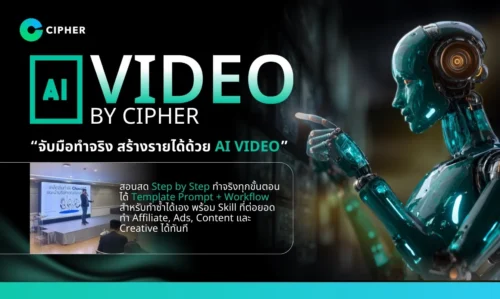The world of online search is changing rapidly! In an era where artificial intelligence is transforming how people find information, online business owners need to adapt quickly. Effective techniques for SEO with AI are becoming essential for every online business.
In this article, we’ll dive deep into the new SEO approach called ASEO (Adaptive Search Engine Optimization) and explore how marketing with SEO can leverage artificial intelligence to make your business stand out from competitors in this changing search landscape.
Table of Contents
Why Traditional SEO Is No Longer Enough: The AI SEO Revolution
The digital world is evolving rapidly. Beyond just Google searches, people are increasingly turning to ChatGPT, Perplexity, and other artificial intelligence tools. Making your brand visible now requires more than just ranking on Google—you need to implement advanced techniques for SEO with AI. This shift in marketing with SEO has become crucial for online visibility.
If you’re still practicing Traditional SEO focused only on:
- On-site SEO (optimizing website elements)
- Off-site SEO (building external credibility)
- Technical SEO (technical website improvements)
You might be missing opportunities to reach audiences who use artificial intelligence for information searches. Understanding what SEO is and how it’s evolving is crucial for success.
What is ASEO? Understanding Techniques for SEO with AI

ASEO (Adaptive Search Engine Optimization) is a new SEO concept that adapts to the artificial intelligence era, helping your website grow effectively on both Google and AI-driven platforms. The future of marketing with SEO will definitely be transformed by artificial intelligence.
ASEO consists of 3 main components:
1. Discovery - Make Your Website More Findable for AI
Making AI recognize and understand your website includes:
- Creating content that understands user search intent
- Sending clear signals to search engines
- Anticipating questions users might have in the future
2. Engagement - Build User Interaction
Making users interested and engaged with your website:
- Preparing content for follow-up questions users might have
- Creating diverse content formats (articles, infographics, videos)
- Getting verified through reviews and social proof
3. Results - Aim for Expert Status
Building long-term credibility:
- Creating content that covers all aspects of a topic
- Writing from experience and reality
- Consistently delivering quality content
7 Key Elements of ASEO: Essential Techniques for SEO with AI

1. Technical Issues - Fix Technical Problems at the Right Points
Technical problems directly affect SEO. If your website has issues, it may be difficult to discover, slow to index, and lose traffic. From CIPHER’s experience managing over 300 websites, 3 out of 10 websites have technical issues that need improvement.
Important areas to focus on:
1.1 Crawling Ability – Help Googlebot Access Your Content
- Fix broken pages
- Use Robots.txt to control access
- Improve internal links for easy access to all pages
1.2 Indexing Ability – Help Google Index Your Site Effectively
- Use meta tags like ‘index’ and ‘noindex’ correctly
- Add Schema Markup with Yoast SEO to help Google understand your content
- Use Canonical tags to specify the main page you want ranked
1.3 Site Architecture – Structure Your Site for Easy Navigation
- Use Flat Site Structure where all pages link from the homepage
- Design clear and easy-to-use navigation systems
1.4 Page Experience – Make Your Site Fast and Efficient
- Improve Page Load Speed by reducing CSS and JavaScript file sizes
- Focus on Core Web Vitals
- Use Mobile-first design concepts
2. SXO (Search Experience Optimization)
SXO involves improving user experience (UX) in alignment with SEO to achieve good rankings while delivering excellent experiences.
Data shows that pages with longer average time spent are ranked higher by Google. Google considers pages that keep users engaged longer to be more valuable.
Effective SXO methods:
- Understand searcher needs (Search Intent) and create content that meets those needs
- Improve your website to maximize conversions by optimizing CTAs and making forms user-friendly
- Design UX/UI for ease of use and mobile compatibility
3. External Signals - Building Credibility from Outside Sources
External signals are factors outside your website that affect credibility, including:
- Social media activities – more engagement is better
- Quality of websites linking to you
- Brand building
- Reviews and website credibility
Pro tip: Modern marketing with SEO requires adapting to artificial intelligence-powered platforms that people increasingly use for information searches. Use ASEO and GEO strategies to optimize your website for both search engines and AI. The key is creating quality content that’s trustworthy and provides good user experiences.
4. Link Building (Backlinks)
Building backlinks in the AI era should focus on quality over quantity by creating links from trustworthy sources. Using tools like Ahrefs can help you identify quality backlink opportunities and analyze your competitors’ link profiles.
Expert recommendations vary:
- Google recommends building backlinks from trusted local websites
- AI suggests creating links from trustworthy local English-language websites
- SearchGPT recommends getting backlinks from globally recognized websites
5. SILO-based Structure - Organize Content into Clear Categories
SILO-based Structure involves organizing content into clear categories and using internal links to connect related content.
For example, pages discussing nose surgery would link to other pages about nose surgery, helping Google understand content relationships and rank pages better.
6. High-quality Content - Content Quality Following E-E-A-T Principles
Creating content according to E-E-A-T Factor is a standard Google uses to measure website quality and credibility:
- Experience – Share the writer’s direct experience in the content, including personal opinions based on real experiences
- Expertise – Demonstrate expertise through detailed and in-depth information not commonly found on other websites
- Authoritativeness – Establish yourself as a trustworthy information source that other websites and AI reference
- Trustworthiness – Present accurate, complete, transparent information with clear sources
7. Keyword Research & Intent - Understanding Search Intentions
Keyword Research & Intent involves finding keywords that users actually search for and understanding the intention behind those searches to create content that meets their needs.
Good to know: An important technique for SEO with AI is creating quality content that’s credible and provides good user experiences. Regardless of how technology changes, the value you provide to users will help your brand stand strong in any era.
Types of Search Intent (5 types):
- Informational – Seeking information and knowledge
- Navigational – Wanting to go directly to a website or product page
- Commercial – Looking for comparison information before making a purchase decision
- Transactional – Wanting to buy a product or service
- Local – Seeking information in the same geographic area
Artificial Intelligence and SEO: What Brand Owners Need to Know
The integration of artificial intelligence into SEO has some interesting data points:
- 54% of SEO experts use AI SEO tools in their work
- Google creates AI-generated answers for 8.71% of all keywords
- Detailed searches using ten or more search terms have a 19.10% chance of triggering AI overview results
Techniques for SEO with AI: Tailoring for Different User Personas
1. E-Commerce Shoppers
Behavior: Search for product information, compare prices, and read reviews before making purchase decisions
Appropriate SEO techniques:
- Create complete Product Schema Markup so AI understands product information
- Add natural product reviews with ratings to build credibility
- Use language that emphasizes product features and benefits that meet buyer needs
- Create detailed and neutral product comparison content
Example keywords that trigger AI: “review
“, “is good”, “compare with “2. Information Seekers
Behavior: Need in-depth information, problem-solving methods, or explanations about a topic
Appropriate SEO techniques:
- Create comprehensive content covering all aspects
- Use SILO structure to connect related content
- Insert FAQ Schema Markup to answer common questions
- Use various presentation formats (text, images, videos, infographics)
Example keywords that trigger AI: “how to [do something]”, “what is [topic]”, “explain [concept]”
3. Business Owners & Marketers
Behavior: Search for strategic information, market trends, and tools to improve business efficiency
Appropriate SEO techniques:
- Create content with expert insights
- Present case studies and measurable success examples
- Use the latest data and statistics referenced from credible sources
- Create practical How-to Guides and Checklists
Example keywords that trigger AI: “[marketing] strategies 2025”, “tools for [objective]”, “how to increase [business KPI]”
4. Mobile Users
Behavior: Search for information while traveling or doing other activities, need quick and concise information
Appropriate SEO techniques:
- Improve Mobile UX to be simple and uncomplicated
- Use Accelerated Mobile Pages (AMP) for fast loading
- Organize content for easy reading with clear subheadings for quick scanning
- Add Local Schema Markup for location-based searches
Example keywords that trigger AI: “[service] near me”, “what time does [place] open”, “how to [do something] quickly”
5. Voice Search Users
Behavior: Search using voice through smart devices, using natural question sentences
Appropriate SEO techniques:
- Adjust content to answer questions directly
- Use natural, not overly formal language
- Create FAQs that comprehensively answer basic questions
- Use long-tail keywords in question format
Example keywords that trigger AI: “how to [achieve goal]”, “why does [something] [happen]”, “what is the [best thing] for [situation]”
- AI summaries average approximately 4,342 characters in length.
- Websites referenced in Google AI Overviews are mostly (84.72%) websites ranking 1-10 in natural search results.
Keywords That Trigger AI Results
Keywords that trigger AI results are changing rapidly. The latest data shows:
- “What is” type questions increased by 20%
- “How to” type questions increased by 15%
- Phrases containing “symptoms of” increased by approximately 12%
- Questions with the word “treatment” increased by 10%
Long-tail keywords with specific focus, even with low search volume, often trigger AI Overviews more frequently.
GEO - The New Future of SEO That Brand Owners Must Know
GEO (Generative Engine Optimization) is a new concept focusing on optimizing content for AI selection when users search.
In the past, marketing only on Google was sufficient, but now people increasingly use ChatGPT, Perplexity, and other AI tools. Simply optimizing for website rankings is no longer enough.
Key Factors That Make AI Choose Your Website
Three main factors that make AI choose your website:
- Authoritative List Mentions – Good rankings in both Google and Bing searches
- Awards, accreditations, affiliates – Having awards or certifications
- Online Reviews – Reviews on major websites like Amazon, CNet
Other important factors:
- Social Sentiment
- Customer Examples & Usage Data
- Google Website Authority
- Local Business Reviews
Specific Approaches for Each AI Platform
Perplexity: Focus on Google rankings, Online Reviews, Awards, and Backlinks
ChatGPT: Similar to Perplexity but change from Google to Bing
Gemini: Similar to both Perplexity and ChatGPT, but for Local Recommendation searches, focus on Local Business Reviews
The challenge in this era is the rise of “zero-click searches” where users don’t need to click through to websites because AI summarizes all the information. You therefore need to maximize conversion for those who do visit your site.
Essential SEO Tools for Implementing Techniques for SEO with AI
There are many AI SEO tools available today that help make marketing with SEO more effective:
- Gemini – Helps find keywords and create SEO content
- Ahrefs – Analyzes keywords, content, link building, and tracks rankings
- Frase – Helps create SEO content, adjust content, write headings, and structure content
- Surfer SEO – Analyzes content compared to top-ranking websites
SEO Services from CIPHER - AI SEO Techniques for Your Business
CIPHER is ready to help your business grow in the digital world with comprehensive AI SEO services:
ASEO Audit & Strategy
AI-Ready Content Creation
Technical SEO Overhaul
Authority Building Package
SEO Services from CIPHER
Continuously track and analyze your website’s performance on both Search Engines and AI-powered platforms. Learn more about professional SEO services to maximize your online presence.
Conclusion
Modern marketing with SEO requires adapting to artificial intelligence-powered platforms that people increasingly use for information searches, using ASEO and GEO strategies to optimize websites for both Search Engines and AI. The key is creating quality content that’s trustworthy and provides good user experiences because regardless of how technology changes, the value you provide to users is what allows brands to stand the test of time.
Ready to implement these techniques for SEO with AI? Contact CIPHER today and let us help your business keep pace with the artificial intelligence SEO era!






